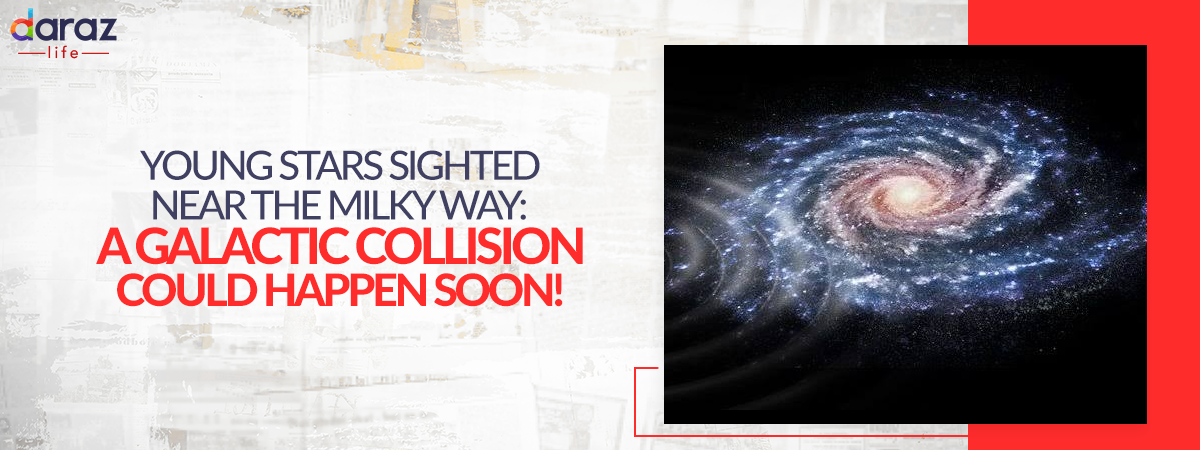
A Galactic Collision is Expected as Clusters of New Young Stars Is Sighted at the Edge of the Milky Way
Recently, astronomers have discovered thousands of young stars clustering at the ancient reaches of the Milky Way. It seems that the new stars come from two different galaxies, the Large and Small Magellanic Clouds – the two nearby galaxies have been on their way to crashing into our galaxy in 2-3 billion years.
However, this recent discovery indicates that the predicted collision might actually happen sooner than scientists had expected.
According to astronomers, the future galactic collision is already forming new stars at the edge of the Milky Way. The furthest reaches of our Galaxy harbor the oldest stars, which is why astronomers were surprised to find new stars in those places of the Milky Way.
“It’s really, really far away. It’s further than any known young stars in the Milky Way, which are typically in the disk. So right away, I was like, ‘Holy smokes, what is this?”, said Adrian Price-Whelan – an astronomer at the Flatiron Institute who led the team that made this discovery.
The researchers presented their discovery findings at the American Astronomical Society’s annual meeting.
Price-Whelan’s team used data from a European space telescope called Gaia to identify the newly found stars at the edge of the Milky Way. Gaia was launched in December 2013 with the ambition of making a 3D map of the galaxy.
The researched removed the cluster of known stars to narrow down a cluster of stars that are about 117 million years old. That makes these stars much younger in comparison to the 13-billion year old stars edging the Milky Way.
All the stars in the cluster share a similar age and location, thus suggesting that they all formed together.
In order to identify where these stars came from, the researchers analyzed light from the 27 brightest stars in the cluster. In their study, they found that the frequencies of the light indicates that they don’t have much metal. This is interesting, given the fact that the Milky Way is edged with metal-heavy materials .
The researchers found the contents of the stars look similar to that of the nearby galaxy – Magellanic Stream, which is a river of gas that extends from the Large and Small Magellanic Clouds towards the Milky Way.
Scientist say that it seems the cluster started as a cloud of gas in the Magellanic Stream that eventually compressed to form stars when the Milky Way pulled it in. They estimated the distance of the Stream with unparalleled accuracy, and found that the stream is only 90,000 light-years far from the Milky Way. This is half the distance that the scientists originally thought!
A physicist, David Nidever, at Montana State University said in a release,
“If the Magellanic Stream is closer, especially the leading arm closest to our galaxy, then it’s likely to be incorporated into the Milky Way sooner than the current model predicts.”

This new discovery will also help scientists settle the long debate on whether Magellanic Clouds ever passed through the Milky Way before. Scientists also say that the galactic collision won’t be catastrophic, because the galaxies are mostly empty inside.
In fact, Nidever said,
“Right now, our galaxy is using up gas faster than it’s being replenished,” he said. “This extra gas coming in will help us replenish that reservoir and make sure that our galaxy continues to thrive and form new stars.”
